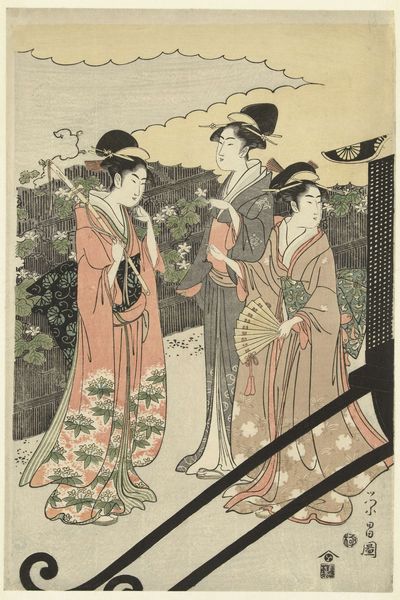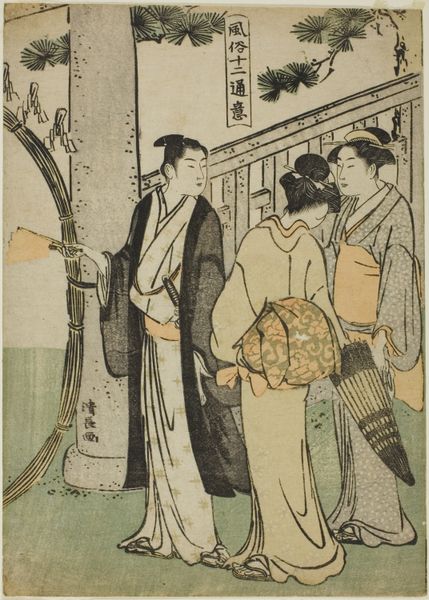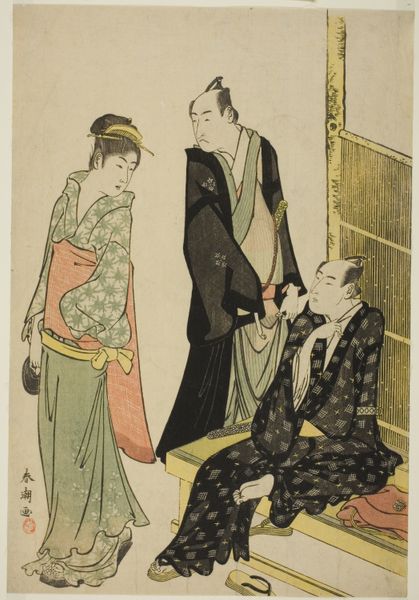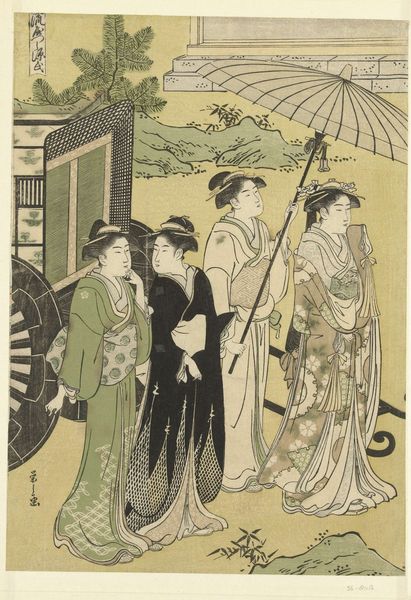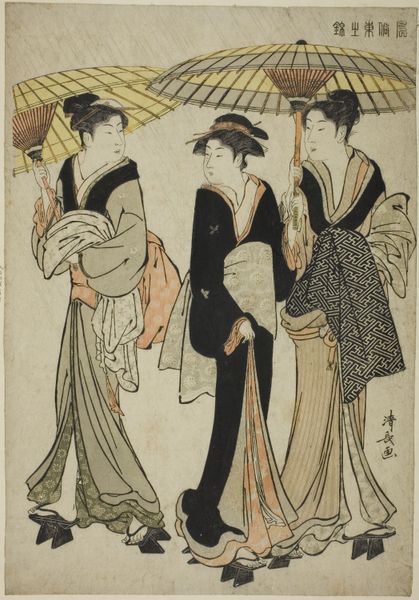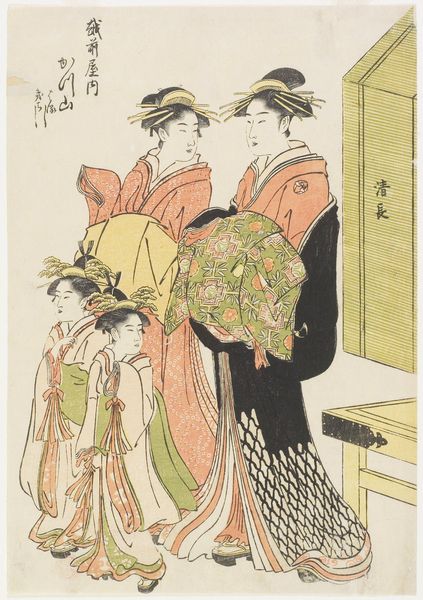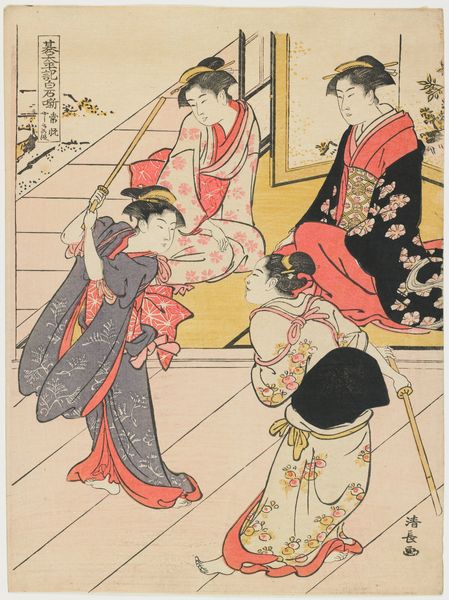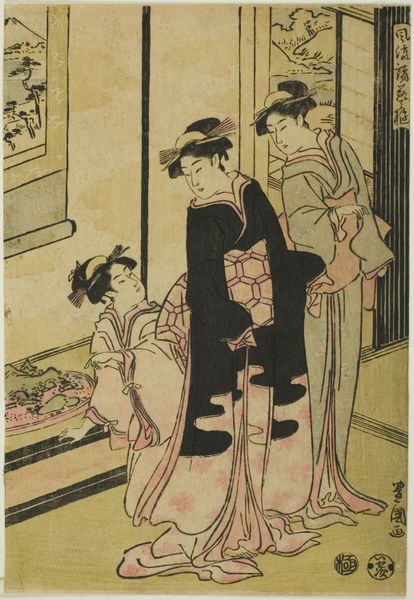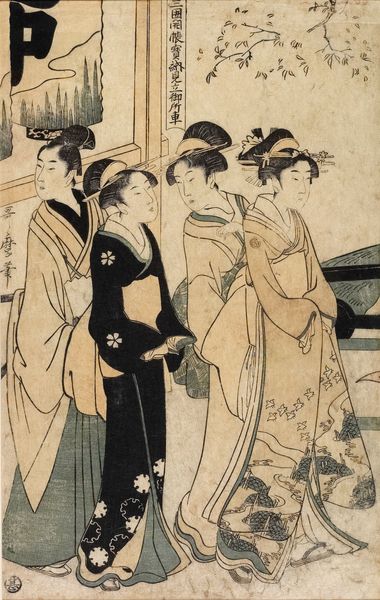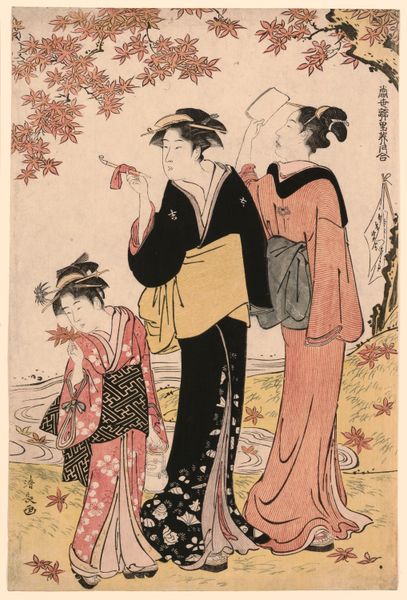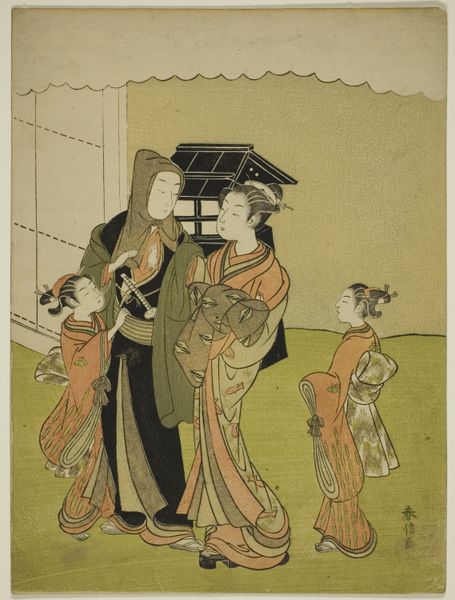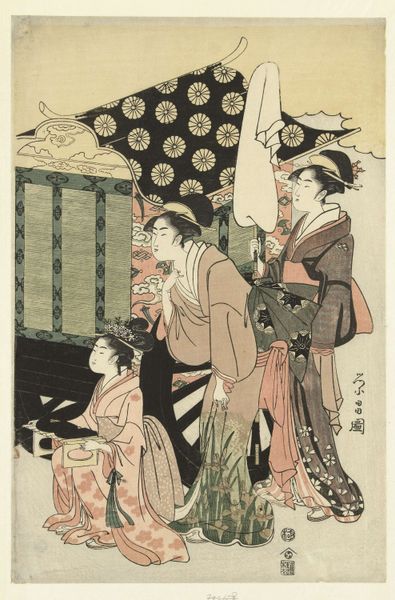
The Tenth Month (Jugatsu), from the series "Twelve Months in the South (Minami juni ko)" c. 1783 - 1784
0:00
0:00
print, woodblock-print
#
portrait
# print
#
asian-art
#
ukiyo-e
#
woodblock-print
#
genre-painting
Dimensions: 24.8 × 18.2 cm
Copyright: Public Domain
Curator: This delicate woodblock print is titled "The Tenth Month (Jugatsu), from the series Twelve Months in the South (Minami juni ko)". It was created around 1783-1784 by Torii Kiyonaga. What strikes you about this image? Editor: It’s the overwhelming serenity, actually. A gentle warmth permeates this domestic scene, especially from the palette – peach, grey, cream—softening the stark lines of the interior space. Curator: Indeed. The artist was a master of the ukiyo-e style, popular during the Edo period. Prints like this one provide glimpses into the fashionable world of courtesans and urban life, although through a lens of established gender roles. What’s remarkable is that Kiyonaga’s portrayals presented the women in powerful, dynamic, even unusually tall compositions, reflective of his own observations about gender. Editor: The symbols within their garments suggest this elevated status as well: notice the intricate, repeating patterns. Also, the young attendant… is he holding something that appears like an abbreviated fan? Curator: A very observant catch! A clue into performance and audience perhaps? The boy likely serves the courtesans. The patterns, as you mention, become indicators of status within a strictly defined class hierarchy. The image prompts questions around social mobility. For whom are the performers trying to appeal to with that fan? What are the conditions to entry and the role they might play? Editor: Yes, the visual clues do unpack a story. I'm particularly drawn to how the translucent quality of the panels at the far end of the scene evoke a sense of depth. But ultimately the gaze rests on the relationship between the foregrounded group as the center of a domestic universe. Curator: I agree, it's a remarkably insightful snapshot of 18th century life in Japan. Its artistic mastery lies in its ability to weave multiple layers of class, gender, status, power, and symbol into the very essence of the print, rewarding patient consideration. Editor: Agreed; studying the recurring symbols and imagery can deepen one's appreciation of these historic visual records.
Comments
No comments
Be the first to comment and join the conversation on the ultimate creative platform.

